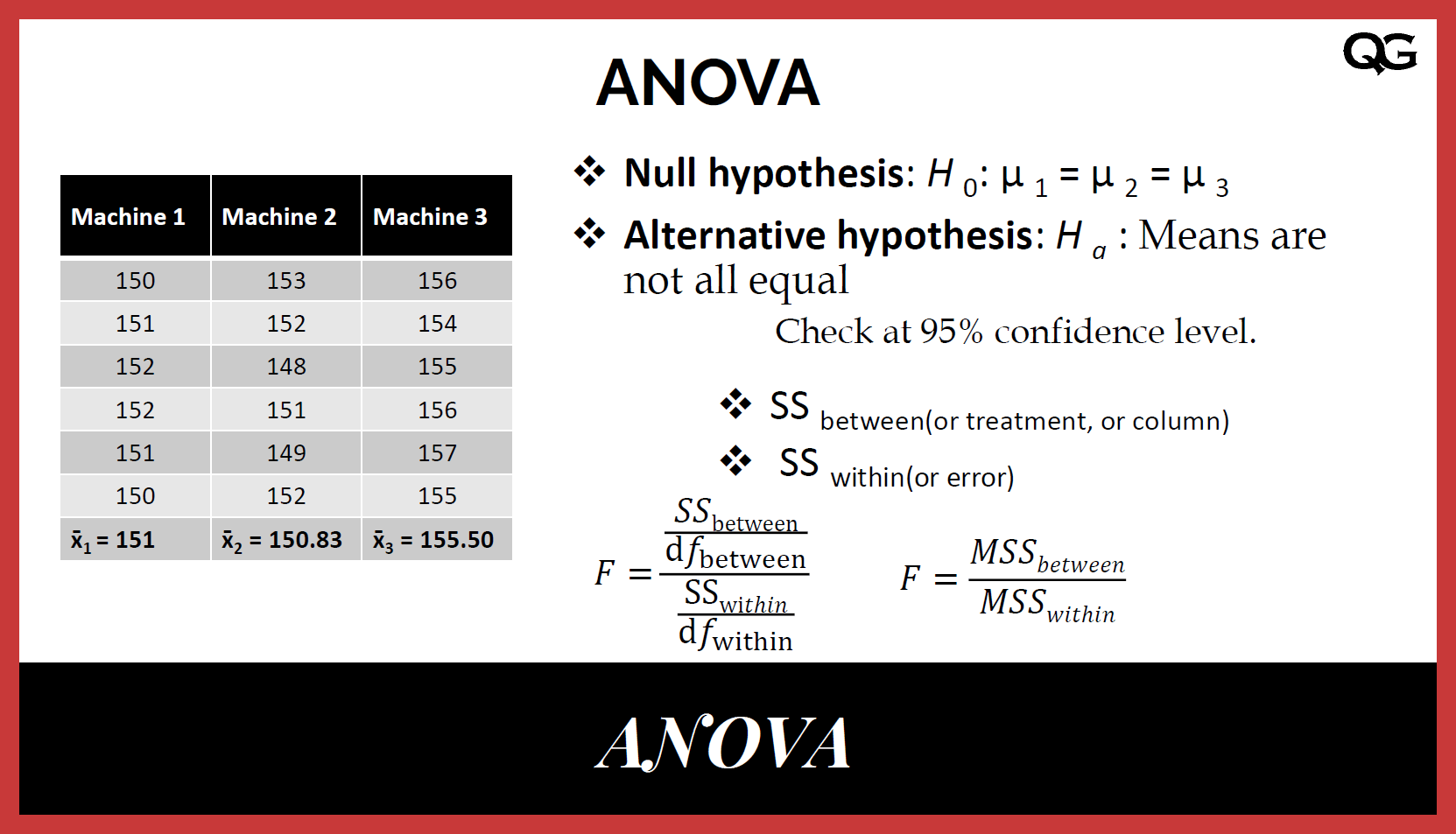Logic Behind Analysis of Variance (ANOVA)
## Logic Behind Analysis of Variance (ANOVA)
**Analysis of Variance (ANOVA)** is a statistical method used to test differences between two or more group means. The fundamental logic behind ANOVA is to assess whether the variability in the data can be attributed to the differences between the group means or if it is simply due to random chance.
### Key Concepts:
1. **Total Variability**: ANOVA partitions the total variability observed in the data into two components:
- **Between-Group Variability**: This reflects the variation due to the interaction between the different groups being compared. It measures how much the group means differ from the overall mean.
- **Within-Group Variability**: This reflects the variation within each group. It measures how much individual observations within each group differ from their respective group mean.
2. **F-Ratio**: ANOVA computes an F-ratio, which is the ratio of the variance between groups to the variance within groups. A higher F-ratio suggests that the variability between group means is greater than the variability within groups, indicating a significant difference among the group means.
3. **Hypothesis Testing**: The null hypothesis (H0) states that all group means are equal, while the alternative hypothesis (H1) states that at least one group mean is different. ANOVA tests these hypotheses by analyzing the F-ratio and determining the associated p-value.
## Differences Between ANOVA and T-Test
### Key Differences:
- **Number of Groups**: The most significant difference is that a t-test is used to compare the means of two groups, while ANOVA is used to compare the means of three or more groups.
- **Statistical Output**: A t-test produces a t-statistic and a corresponding p-value, while ANOVA produces an F-statistic and a p-value.
- **Complexity**: ANOVA can handle more complex experimental designs, including factorial designs, where multiple independent variables are analyzed simultaneously.
### When to Use Each:
- **T-Test**: Use when comparing the means of two groups (e.g., comparing test scores between two different teaching methods).
- **ANOVA**: Use when comparing the means of three or more groups (e.g., comparing test scores among three different teaching methods).
## Application of ANOVA in Sociological Research
ANOVA is particularly useful in sociological research when examining the effects of categorical independent variables on continuous dependent variables. Here are some situations where ANOVA would be appropriate:
1. **Comparing Group Differences**: When a researcher wants to compare the impact of different social programs on participants' outcomes (e.g., income levels across different training programs).
2. **Assessing Treatment Effects**: In experimental designs, ANOVA can be used to evaluate the effectiveness of multiple interventions (e.g., comparing the effectiveness of different community outreach strategies on public health).
3. **Analyzing Survey Data**: When analyzing survey responses from different demographic groups (e.g., comparing satisfaction levels across various age groups or income levels).
In summary, ANOVA is a powerful statistical tool that helps researchers determine whether significant differences exist among group means, making it essential for analyzing complex social phenomena in sociological research. It provides insights that can inform policy decisions and enhance understanding of social dynamics.
Citations:
[1] https://www.wallstreetmojo.com/anova-vs-t-test/
[2] https://keydifferences.com/difference-between-t-test-and-anova.html
[3] https://testbook.com/key-differences/difference-between-t-test-and-anova
[4] https://www.voxco.com/blog/anova-vs-t-test-with-a-comparison-chart/
[5] https://www.raybiotech.com/learning-center/t-test-anova/
[6] https://www.youtube.com/watch?v=4WtnVOAefPo
[7] https://www.ncbi.nlm.nih.gov/pmc/articles/PMC6813708/
[8] https://www.reddit.com/r/statistics/comments/12u4zgj/q_why_run_a_ttest_instead_of_an_oneway_anova/






